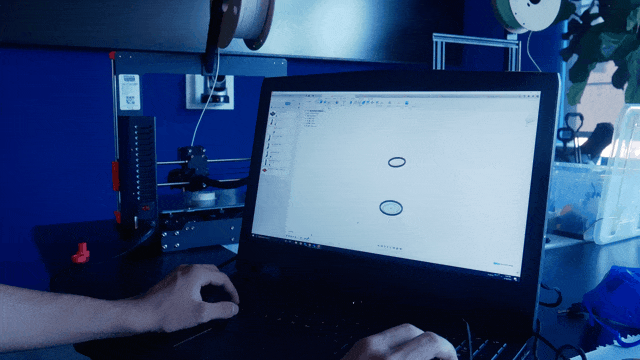
AiroCare: a health monitor app with a smart nebulizer that improves medical care for asthma patients and physcians
Year
2023.02
My Role
User Research
Ideation
Wireframing
Prototyping
Team
1 x MBA, Data Scientist, Engineer, Designer
Mentor
Felix Litvinsky
Mayur Saxena
Dennis Gonzalez
Carolyn Chu
Design Tool
Figma
Brief
The 2023 Health Hackathon, sponsored by Johnson & Johnson, gathered 200 participants in person from across degrees, majors, and schools to create solutions to needs in human health & wellness in 36 hours.
I collaborated with data scientists, business, and computer science students to design, develop, and prototype AiroCare. It's a health-tracking app with a smart nebulizer that collects users' data, analyzes their breathing patterns, and communicates this information with patients and their doctors.
The app, paired with a nebulizer and spirometer via Bluetooth, also serves as an external attachment for many inhalers and Bluetooth spirometers. It automatically tracks medication usage, measures lung capacity, and syncs the information with the patient's doctor through a dedicated portal.


The Challenge
Child asthmatic patients struggle to remember and convey their treatment details to physicians, exacerbated by nebulizers' inadequate data collection and analysis features. Simultaneously, physicians lack a comprehensive platform to evaluate the progression of treatments.

Goals
-
Increase doctors/physicians and patient's engagement and connection
-
Improve asthmatic patients' awareness of weather triggers in their daily lives.
-
Make nebulizer treatment more comfortable for the child and understand their treatment process (for parents)
Process

Research
I started out conducting a primary interview with my teammate who had experienced asthmatic treatment as a child, and secondary research using online resources to understand the importance of asthma management; what kind of health activity patients want to view.
I proceeded to conduct a competitor analysis of some direct and indirect players by reviewing their app features, interface design, pricing, and user feedback.
Competitive Analysis
Identify direct and indirect competitor's devices that are built to aid asthmatics.
Review their success strategy, app features, interface design, pricing, and user feedback.

Key user problems and pain points we found:
-
Current nebulizers mostly deliver only 10% of the drug to patients
-
Nebulizers don’t collect nor analyze patient’s treatment data
-
Doctors/Physicians don’t have a channel to analyze treatment
-
Unpredictable weather changes that easily trigger asthmatic symptoms
Target Users
Young patients who have asthma or any other respiratory condition that requires the use of nebulizer
Doctors/Physicians who can track patient’s analystics
Market Size

Define HMW Statement
How might we assist young asthma patients undergoing nebulizer treatment in effectively managing and controlling their asthma treatments, while also enhancing communication between them and their physicians?
Ideation and Design
I started off working with data scientists about what kind of data can be generated and how the data looks like

Wireframe
After a brainstorming session and sketching, we conducted the initial testing with our mentors and made adjustments to our user scenario according to their feedback and started to draw the screens on Figma.

High Fidelity Prototype
Creating a high-fidelity interface within a tight 24-hour timeframe while also trying to achieve the complexity of our solution was a huge challenge. The Apple Voice Memos app provided a good starting point for recording and sharing messages. Beyond this home screen, my group considered how the app should allow users to simultaneously 'hug' while speaking.



In addition, I worked with teammates on prototyping the 3D-printed nebulizer.

Assisted in 3D Printing

3D Printed nebulizer

Machine learning for breath forecasting
Appendix
Before we landed on AireCare
Our team pitched many other healthcare ideas before the hackathon commenced and we decided to centered around addressing challenges in the treatment of asthma patients using nebulizers to the best of our abilities. Our plan during the hackathon involves crafting a mobile and tablet device for patient-doctor data analysis, a 3D-printed nebulizer, and the integration of machine learning to predict breathing patterns.


What's Next? Product Roadmap
The hi-fi prototype needs to be tested with the target segment for uncovering errors and possible improvements in usability and interaction. The next steps would be conducted user testing for the usability of symptoms, peak flow, triggers and medication to help patients and physician's track the treatment progress over a period of time.

Thank you for reading!
